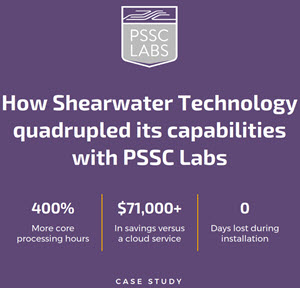HPE has hired former Intel senior HPC executive Trish Damkroger as Chief Product Officer of the HPC & AI Organization. Damkroger left Intel last year after the company confirmed in October that she would be replaced by Jeff McVeigh, named GM of Intel’s Super Compute Group. In a blog post today, HPE EVP/GM of HPC & AI Justin Hotard said Damkroger has been added “to the HPC and AI team to drive an end-to-end strategy and augment solutions for the next wave of innovation.”
Damkroger, pictured here, joins HPE at a pivotal time for the company’s HPC organization as its customers at three US Department of Energy national laboratories transition to the exascale era — supercomputers capable of 1018 calculations per second. As Hotard stated in his blog, “HPE is at the forefront of making exascale computing, a technological magnitude that will deliver 10X faster performance than the majority of today’s most powerful supercomputers, a soon-to-be reality. With the upcoming U.S. Department of Energy’s exascale system, Frontier, an HPE Cray EX supercomputer that will be hosted at Oak Ridge National Laboratory, we are unlocking a new world of supercomputing.”
As we have previously reported, unconfirmed rumors have circulated the HPC community that systems engineers at HPE and Oak Ridge engineers have encountered difficulties scaling full-system (100+ cabinets) Frontier functionality due to issues with HPE-Cray’s Slingshot interconnect technology tasked with enabing the entire system to function as an integrated whole. Frontier was installed on schedule last fall, and Oak Ridge recently updated its due date to next January 1 (the previous due date: next December 31) for Frontier to deliver “full user operations.” In the most recent edition of the @HPCpodcast, Oak Ridge Associate Director Jeff Nichols painted an optimistic picture of the Frontier testing and tuning process, now ongoing.
Another exascale system undergoing development, Argonne National Laboratory’s Aurora, which will have an HPE-Cray EX architecture and for which Intel is the prime contractor, will be another focus area for Damkroger. Aurora had been scheduled to be the first American exascale system until installation delays, due to delays in the delivery Intel’s forthcoming “Ponte Vecchio” GPU, were announced nearly two years ago. Aurora installation is scheduled for later this year.
As Hotard noted in his blog, Damkroger’s work at Intel “include(d) a significant collaboration with the U.S. Department of Energy’s Argonne National Laboratory to commit to delivering future generations of HPC and AI architecture for the upcoming Aurora exascale supercomputer, which will be built by HPE, in partnership with Intel.”
 Damkroger has more than 30 years of HPC experience within public and private sectors. At Intel, she was the VP/GM of HPC leading strategic initiatives in compute, accelerators and memory optimized for supercomputers, including exascale-class HPC. Prior to Intel, Damkroger was deputy associate director of computation at Lawrence Livermore National Laboratory, where she led a group of more than 1,000 engineers and scientists focused on supercomputing efforts. HPE said in previous roles, Damkroger “has been a strong partner to HPE’s HPC team members for many years, having jointly designed and developed powerful supercomputing solutions that have made breakthroughs in science and engineering. We believe our longstanding synergy and shared vision with Trish complements our team’s culture and mission in enabling our customers to accelerate insights and unlock the next level of innovation with HPC and AI.”
Damkroger has more than 30 years of HPC experience within public and private sectors. At Intel, she was the VP/GM of HPC leading strategic initiatives in compute, accelerators and memory optimized for supercomputers, including exascale-class HPC. Prior to Intel, Damkroger was deputy associate director of computation at Lawrence Livermore National Laboratory, where she led a group of more than 1,000 engineers and scientists focused on supercomputing efforts. HPE said in previous roles, Damkroger “has been a strong partner to HPE’s HPC team members for many years, having jointly designed and developed powerful supercomputing solutions that have made breakthroughs in science and engineering. We believe our longstanding synergy and shared vision with Trish complements our team’s culture and mission in enabling our customers to accelerate insights and unlock the next level of innovation with HPC and AI.”
HPE supercomputing customers in the public and academic sectors include Pittsburgh Supercomputing Center, NASA, the National Center for Atmospheric Research and the University of Edinburgh.




